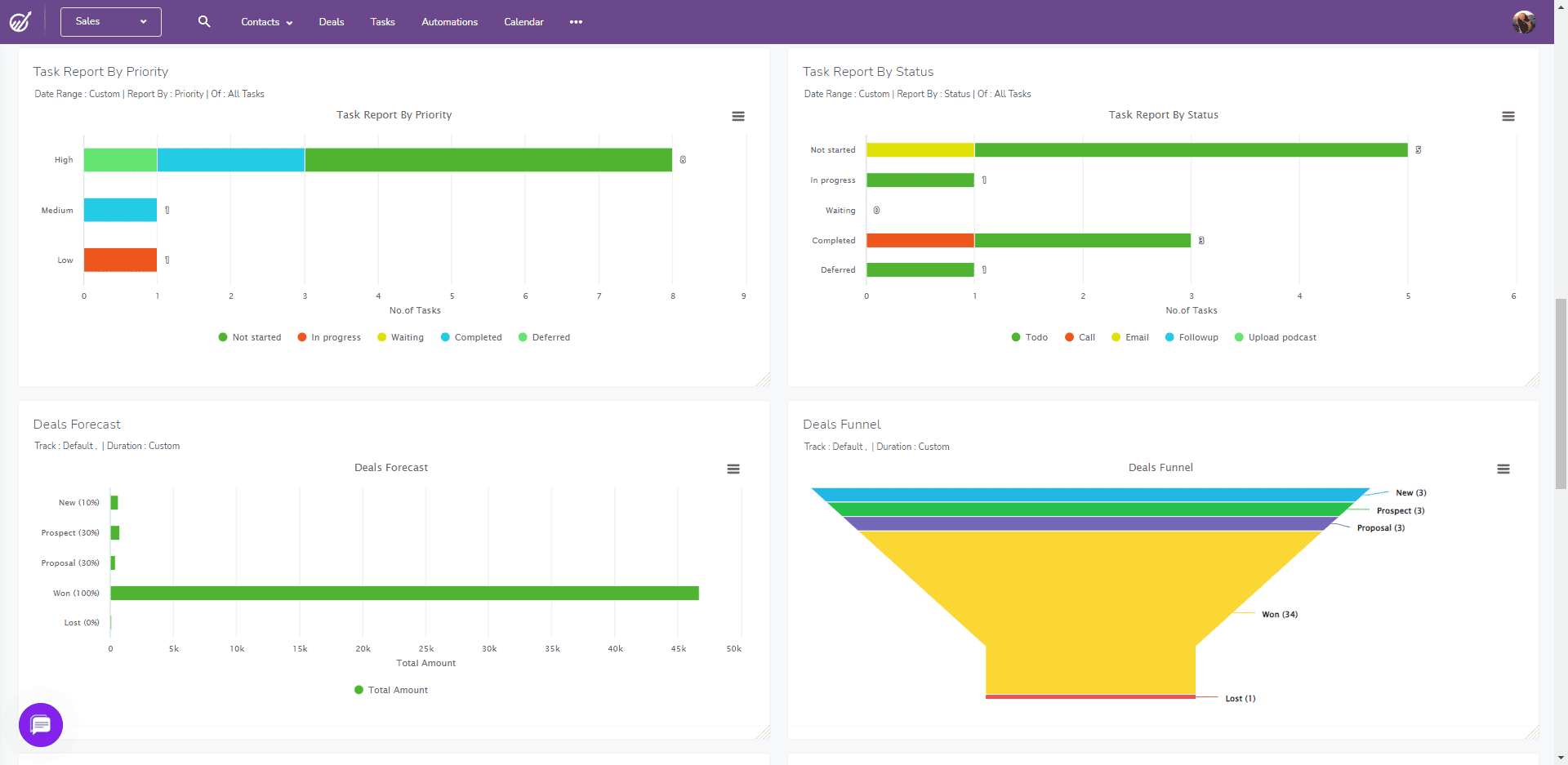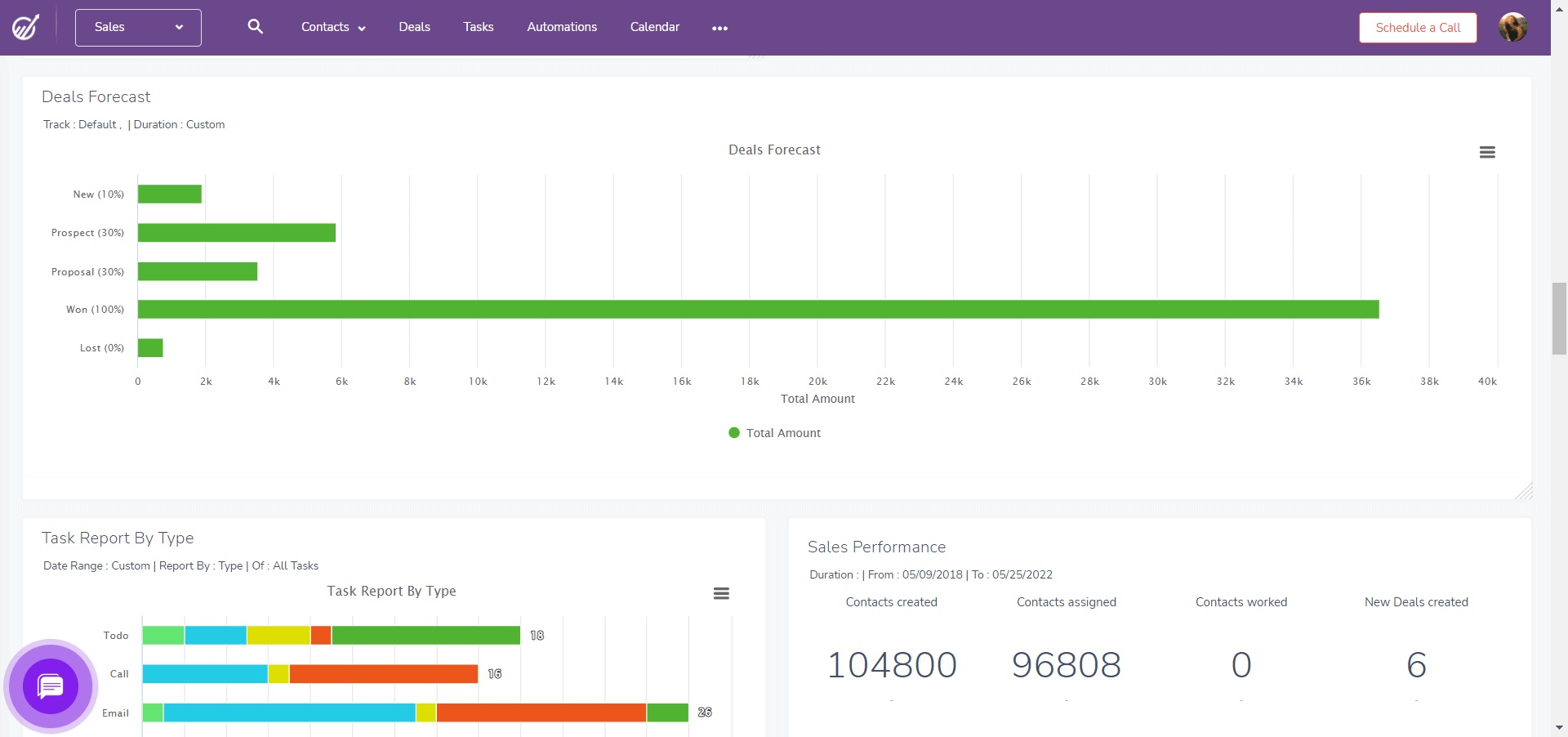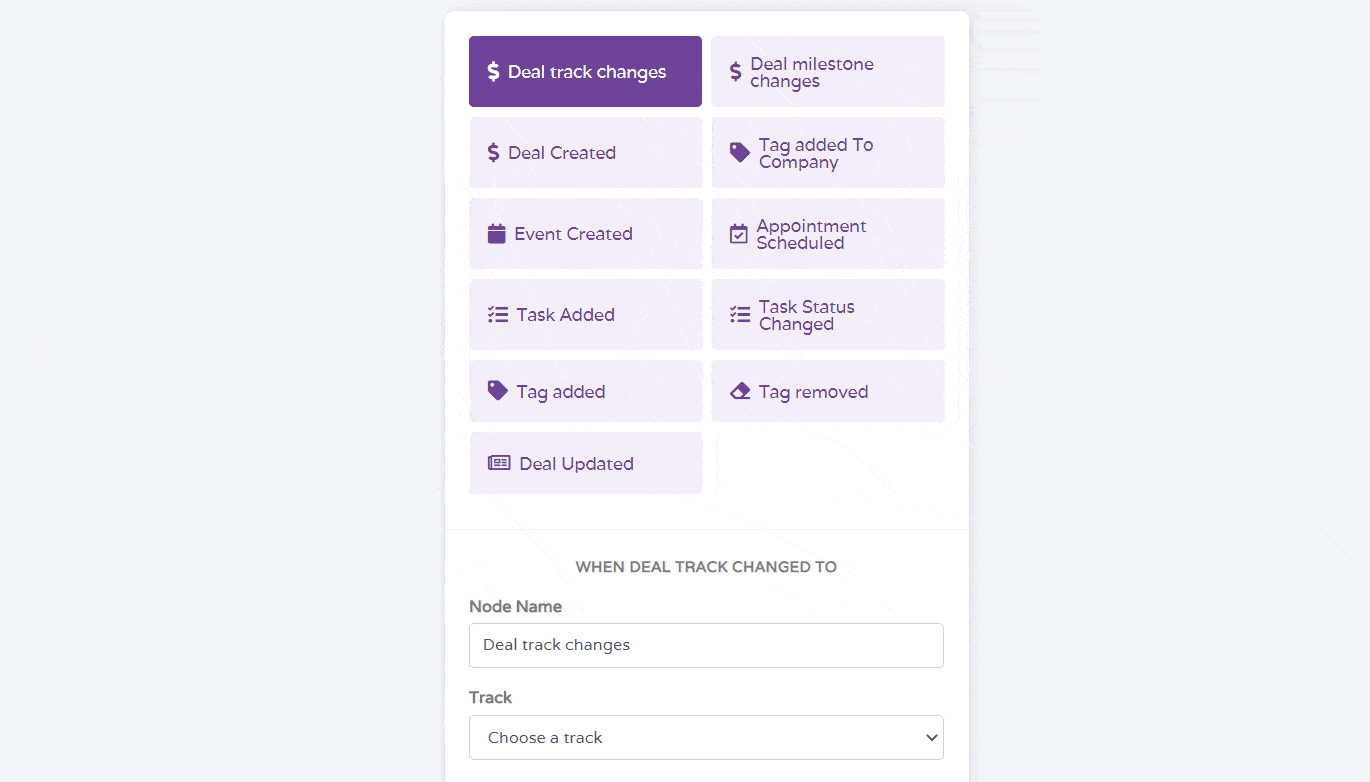Every company needs a sales manager with the leadership skills and know-how to guide a sales team to victory. The sales team can close more deals, accrue more customers, and retain longer-term loyal buyers through good sales management.
What does the management process look like? More specifically, what kinds of functions does it entail? You must be privy to this information to interweave it into an effective sales strategy.
That’s why, in today’s guide, we’ll assess sales management functions that define a manager’s sales process. By the time you’re done reading, you’ll have some new tricks up your sleeve to better lead your sales team!
Table of Contents
The Key Functions of Sales Management
The key functions of sales management include setting targets, planning the sales pipeline, recognizing and rewarding excellence in the sales team, and so on.
Let’s look at these in detail now.
1. Set long-term targets and break them down
The first management strategy for better sales performance involves targets.
No one likes to feel like they’re working aimlessly. It’s kind of like stumbling blind; you might get somewhere, but is it really far enough?
To keep your sales team on-task, set sales targets for them to meet. These targets should vary by week, month, quarter, and year.
It’s simple for reps to get carried away with their own lofty aspirations and set sales targets that exceed what they could reasonably do in the allotted time. As the sales manager, it’s your job to talk down your reps and ensure they set attainable goals.

Shooting for the moon always sounds good in theory, but rarely do you land among the stars. Instead, you plummet face-first into the ground.
In the meantime, the reps who overshot their sales goals end up bringing down the entire team’s production, hurting sales activity for that period.
To determine an appropriate sales goal, assess historical data for the year or quarter prior.
Then consider factors such as the number of reps you have, the performance of your sales team, the current number of leads in your sales funnel, and the roster of products and services available.
From there, it’s just a matter of crunching some numbers to create realistic sales figures.
Once your reps get out there and begin doing what they do best (you know, selling), feel free to tweak your numbers.
2. Recognize excellence when you see it
A win is a win, and even small wins can later amount to huge victories by smashing major milestones.
In your sales management capacity, you should strive always to celebrate your reps’ victories, even the small ones. When your reps accrue those big victories, it’s time to recognize their excellence in a larger capacity.
Compliments feel good to hear. They remind your sales reps that you’re paying attention to what they’re doing and that you see the hard work they’re putting in. This keeps your reps motivated to continue to do their best work, as they know their efforts are acknowledged.
Morale can be contagious, so the positive attitude throughout your office can permeate to all the reps on your team. Productivity might go up, and turnover could decrease.
Read also: Sales Pipeline Guide for Dummies (with relatable memes)
Plan the sales pipeline and cover everything it would need
The next sales management function is sales planning.
Sales planning involves various steps, so let’s go over them now.
Create a mission statement
What is your sales management mission statement? In other words, what kinds of goals, values, and plans does your company have, especially for the sales division you oversee?
A mission statement needn’t be overly long or complicated. The more concise, the more value you’ll get out of it.
Establish your sales objectives and goals
Continue your upward trajectory by compiling a list of sales goals for your reps to achieve. As we discussed before, you should not choose high numbers that sound good but realistic numbers.
Unattainable goals hurt everyone in the end!
Pinpoint your target audience
It never hurts to keep your audience data current, so review your current customer demographics, geographics, and psychographics to divide your audience into specific groups or segments. You can also create customer avatars to exemplify each group.
Sales reps typically have an easier time selling to one avatar, even a fictional one, than a group of thousands of people that fall into that archetype.

Narrow down the sales tactics and strategies
What kinds of sales strategies can you employ to enable your reps to perform at their best?
Well, which tactics have worked for you in the past? That’s undoubtedly a good starting point. Be willing to adjust strategies to work for your current campaigns, and don’t fear discarding any that don’t work for you.
You can also look at your competition’s sales tactics and try those, but don’t outright copy what the competition is doing. Your customers can see through that a mile away. Be more inventive!
Use the right sales tools
Later in this guide, we’ll have a whole section on how sales managers can effectively utilize sales tools to drive success among their reps, so make sure you don’t miss that.
Design your sales funnel
If your company doesn’t have a clear-cut sales funnel, that’s the next part of your sales plan.
Most sales funnels have the same stages, but the order of the stages can change. Review your dearth of sales data to understand your customers’ steps and in which order. Then you can organize your sales funnel from there.
Get clarity on the budgets
Sales aren’t free! You can easily overspend if you don’t have a budget for the sales planning and action stages.
As the sales manager, you must keep a finger on the pulse of how much money you funnel into your reps and their software, hardware, and tools.
Track progress
Once your sales plan goes live, it’s time to see if it lives up to your hopes and dreams. Monitor its successes and failures and change tact if necessary to get the sales plan on the right track.
The Only 8 Sales Performance Metrics That Matter
3. Recruit and nurture a top team
Sales management is only as good as the sales team at the helm.
That doesn’t mean you should hand out pink slips to any reps who underperform. However, you do want to keep an eye on those reps to see if their performance changes (i.e., improves) in the future.

It’s also wise to have a one-on-one assessment with these reps to get to the bottom of what could be hindering their performance. Do they struggle with parts of the sales process? Could their customer interactions use some work?
No matter the issue, it’s your job as the sales manager to work through these problems with the rep. That said, if they don’t improve given time, you might have to make some hard decisions.
In the future, to recruit top candidates who will serve your sales team well, review every part of the recruitment process.
For example, when you put together a job listing, use clear language, especially regarding job responsibilities. You don’t have to divulge compensation in the listing, but don’t beat around the bush when interviewees ask about it.
Speaking of interviewing, make sure you’re asking your candidates thoughtful, meaningful questions to learn about them and their readiness for the job.
When you finally select a candidate after one or two rounds of interviews, give them a premium onboarding experience. Providing high-quality training will ensure your reps know exactly what to do from the first day they’re on the sales floor.
They may need some help or questions answered here or there, but they certainly won’t be sitting around twiddling their thumbs.

4. Motivate your sales reps through remuneration
Earlier, we talked about positive reinforcement to motivate your sales team. While that certainly works, and other motivators like gamification also make an impact, there’s really only one thing that consistently keeps your team going: money.
Your responsibility as sales manager, especially if you’re onboarding new staff, is to ensure that you’re compensating your reps fairly.
Research the average pay for sales teams in your city and state, as location affects one’s income. Then delve into what the competition pays its reps.
Competitive pay will attract more quality candidates to your company and keep your current customers loyal.
Once you’ve determined the reps’ initial pay rates, figure out how often they may receive raises and bonuses (if your company can afford to do so).
After presenting your company with success after success, reps hope to receive remuneration for their work. If you can’t provide that, they’ll find someone who can.
👉Boost your sales success with the ultimate lead management techniques – dive into our in-depth guide today! 🚀
5. Have a routine to evaluate wins and losses
The next phase of sales management is all about assessment. To excel at assessment, you first need to set up a routine for performance review. Otherwise, work itself keeps everybody busy, and evaluation takes a backseat.
For each sales campaign that goes live–and, more specifically, with each open sales deal–your team will succeed in some areas and fail in others.
Ideally, the successes should outnumber the failures to balance everything out. However, even though it’s hard to look failure in the eye, you can’t merely sweep it under the rug.
You must study your reps’ failures more than their successes. After all, their failures inform you where you’re going wrong as a sales manager.
If you see enough of the same mistakes repeated by your sales reps, then it’s time to sit down and reassess if your team needs further training or whether your should change your sales tactics to something they can do more successfully.
Study your successes too. You shouldn’t blindly copy them just because they worked once. Instead, try to look at what worked and why. Then apply those principles to other areas of your sales strategy.
16 Sales Dashboards That Make Sales Fun
6. Focus on converting more customers
One of the biggest mistakes you can make as a sales manager is getting caught up in sales figures at the expense of customer conversions.
A one-time purchase will make your company money, but just that once. Without converting and holding onto the lead, you’re precluding possibly years of future purchases.
How do you increase conversions? Your company website should be designed for more conversions, with an attractive and navigable design, lead magnets, and opt-in forms.
You need great email content to engage with and nurture new relationships. Then your sales reps will take over, waiting for the right time to make their offer.
Your company should also consider a rewards and/or referral program so that when a customer brings in new customers or makes more purchases, they profit from it.
7. Divide tasks by sales territories
As your number of sales reps grows, you’ll find the need to establish sales territories if you haven’t done so already.
It’s your choice how you’ll divide these territories. For instance, you could do so by geographics, niche, customer account size, products the reps specialize in, or client.
Each territory should have about the same number of sales reps to give everyone the same shot at success.
Once you’ve established the territories your reps will work in going forward, every two quarters or every year, you should evaluate the success of the territories and shift staff around if necessary.
Read also: Who is a Manager? Roles and Responsibilities Defined
What Is a Sales Manager’s Working Environment Like?

A sales manager has a rather stressful working environment, if we’re being perfectly frank.
You work with many sales reps split across various territories and oversee countless tasks and responsibilities.
You can’t always be in the same office as your reps, as your job will see you traveling to distributors’ and dealers’ offices as well as local, regional, national, and international offices to see your sales territories in action.
You’ll have to hire quality sales reps you can trust to get the job done even when you aren’t there to oversee the work.
Common challenges sales managers face
Although a sales manager works in a rather stressful environment, the job is exceptionally rewarding. How rewarding depends on a manager’s ability to contend with the following challenges:
- Hiring the right staff
- Reducing employee turnover
- Keeping morale levels high
- Maintaining sales team productivity, even when potentially thousands of miles away
- Keeping up with the goals of your marketing department
- Paying employees enough and using other monetary rewards such as bonuses or raises to help them stay motivated
- Maintaining consistent processes
10 Top Sales Analysis Software for Small Business Owners
The Importance of Technology and Tools to Manage Customer Relationships
To wrap up, we want to discuss sales management tools as we mentioned we would.
In sales, customer relationships are everything. If you’re not already using customer relationship management software or CRM as a sales manager, you’re not doing your job to the fullest.
CRM software has more features to enable you to do your best job for your reps. While it varies by software brand, here are some CRM features you’ll utilize all the time.
CRM has sophisticated email features like email sending, calendar integration, appointment scheduling, and email tracking.
You can also automate emails using preexisting templates (that you create) so that no lead misses communication that could hook them in at just the right moment.
Sales Forecasting
No longer will predicting your company’s sales feel like guesswork.
CRM uses smart predictive features and the data in your current sales pipeline to create a more accurate sales forecast you can safely rely on.

Lead Management
A healthy influx of leads keeps a company on its feet, but the more leads that enter the sales funnel, the harder it becomes to manage them all. Not with CRM!
With CRM lead management features, you can score your leads to determine which are most sales-qualified and then send those leads to your top reps.
You can also address new leads in the funnel as soon as they enter it, taking proactive and timely steps to move the leads through.
Read also: Loan Management System – Everything You Need to Know
Employee Tracking
As we mentioned, you can’t watch what your reps do when traveling for your sales management job. Employee tracking within CRM lets you review metrics such as sales goals, sales numbers, meetings scheduled, ongoing tasks, and hours worked.
You can stay on top of employee productivity without having to be in the office.
Customer Service
Everything you and your sales team do comes down to customer service. With the right CRM software, you can improve your rate of customer service further.
You’ll learn more about your leads and customers than ever before with 360-degree customer views.
You can personalize correspondence with customers, review their purchase histories and website visits to send them content tailored to their sales funnel progress, and keep an ongoing log of all customer communications from your entire sales team.
Read also: How To Use Workflow Automation To Grow Your Business
Workflow Automation
You only have 24 hours in a day as a sales manager, but it never feels like enough, right? With workflow automation, you can win back more hours in your day to stay on top of your workload.

Analytics and Reporting
A CRM will also produce detailed, up-to-the-minute analytics. You can narrow down and filter results to show the data that matters most to you and then produce reports to pass to shareholders within your company.
The Ultimate Resource for Sales Tools, Tips, and Strategies
Conclusion
Sales management involves overseeing all job responsibilities among sales teams.
The best sales managers use various strategies and tools to hire efficient candidates, give them direction, motivate them to stay inspired, and celebrate their successes with them!
For sales, CRM, marketing and support, try the most affordable powerhouse — EngageBay.
You can access the widest range of tools and save thousands of dollars in subscription costs by replacing a bunch of expensive software.


